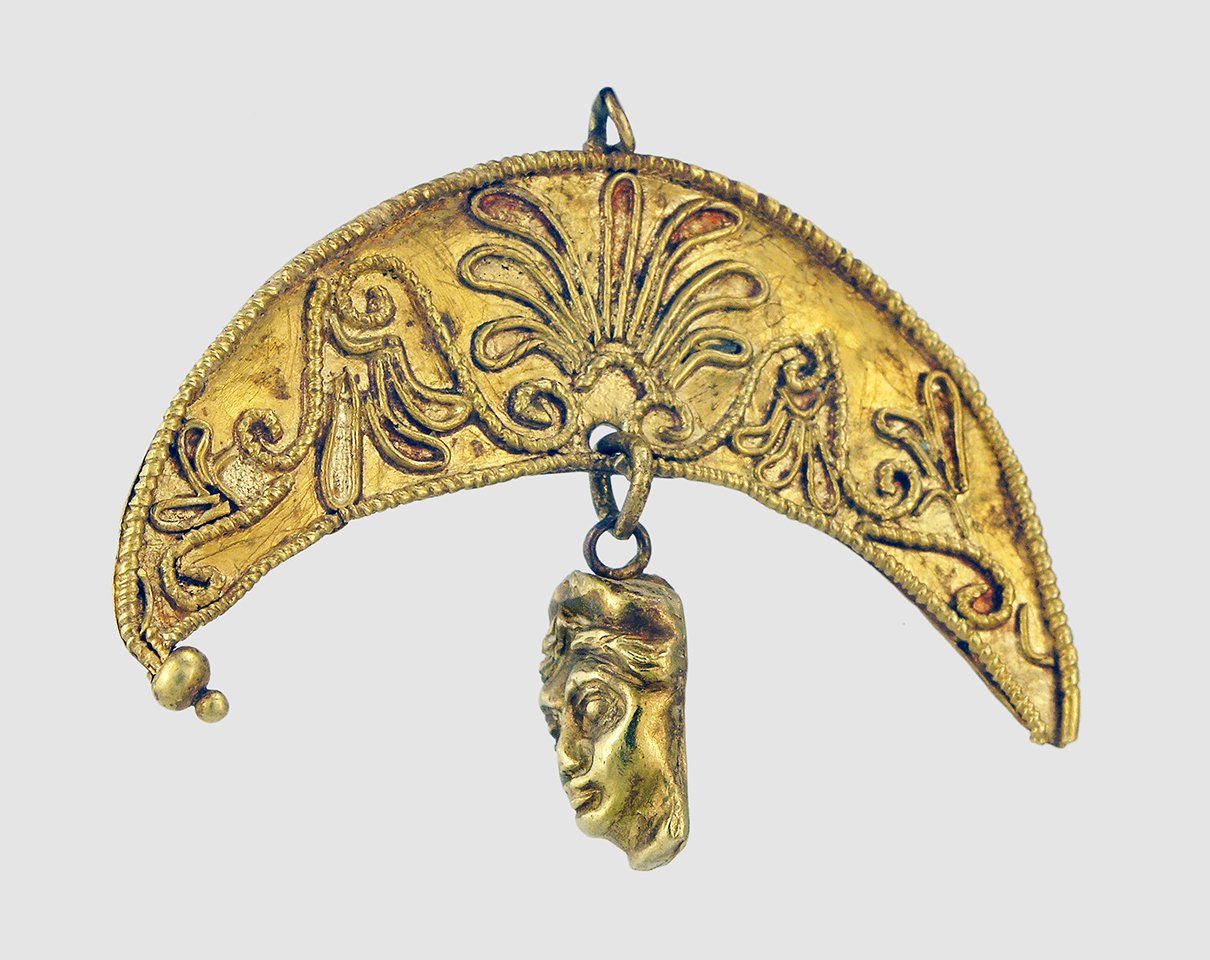A pendant in the form of an upturned moon has a miniature pendant in the form of a female head in a tall headdress. Golden lunnytsias are characteristic of Scythian burials, no older than the 5th century BCE. Lunnytsia symbolizes the moon (heavenly luminary, which is considered the patron of fertility and childbearing) and the feminine essence. They usually served as a pendant to a necklace and were considered an amulet. According to the ideas of the time, they were worn to protect themselves from evil forces, demons and witchcraft, but especially from the evil eye.
Lunnytsias were common throughout the Pontic and Mediterranean region.
en

